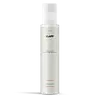What's inside
What's inside
 Key Ingredients
Key Ingredients

 Benefits
Benefits

 Concerns
Concerns

 Ingredients Side-by-side
Ingredients Side-by-side

Water
Skin ConditioningGlycerin
HumectantEthylhexyl Stearate
EmollientHelianthus Annuus Seed Oil
EmollientGlyceryl Stearate Citrate
EmollientCetearyl Alcohol
EmollientPentylene Glycol
Skin ConditioningMyristyl Myristate
EmollientPrunus Amygdalus Dulcis Oil
Skin ConditioningPropanediol
SolventPanthenol
Skin ConditioningAllantoin
Skin ConditioningXanthan Gum
EmulsifyingSodium Stearoyl Glutamate
CleansingArgania Spinosa Kernel Oil
EmollientSodium Lactate
BufferingBisabolol
MaskingTetrasodium Glutamate Diacetate
Lactic Acid
BufferingTocopherol
AntioxidantEthylhexylglycerin
Skin ConditioningAloe Barbadensis Leaf Extract
EmollientSodium Carboxymethyl Beta-Glucan
CleansingMagnesium Chloride
Alcohol
AntimicrobialBioflavonoids
Skin ConditioningBrassica Oleracea Italica Seed Oil
EmollientCitric Acid
BufferingSodium Hydroxide
BufferingPhenoxyethanol
PreservativePotassium Sorbate
PreservativeWater, Glycerin, Ethylhexyl Stearate, Helianthus Annuus Seed Oil, Glyceryl Stearate Citrate, Cetearyl Alcohol, Pentylene Glycol, Myristyl Myristate, Prunus Amygdalus Dulcis Oil, Propanediol, Panthenol, Allantoin, Xanthan Gum, Sodium Stearoyl Glutamate, Argania Spinosa Kernel Oil, Sodium Lactate, Bisabolol, Tetrasodium Glutamate Diacetate, Lactic Acid, Tocopherol, Ethylhexylglycerin, Aloe Barbadensis Leaf Extract, Sodium Carboxymethyl Beta-Glucan, Magnesium Chloride, Alcohol, Bioflavonoids, Brassica Oleracea Italica Seed Oil, Citric Acid, Sodium Hydroxide, Phenoxyethanol, Potassium Sorbate
 Reviews
Reviews

Ingredients Explained
These ingredients are found in both products.
Ingredients higher up in an ingredient list are typically present in a larger amount.
Cetearyl alcohol is a mixture of two fatty alcohols: cetyl alcohol and stearyl alcohol. It is mainly used as an emulsifier. Emulsifiers help prevent the separation of oils and products. Due to its composition, it can also be used to thicken a product or help create foam.
Cetearyl alcohol is an emollient. Emollients help soothe and hydrate the skin by trapping moisture.
Studies show Cetearyl alcohol is non-toxic and non-irritating. The FDA allows products labeled "alcohol-free" to have fatty alcohols.
This ingredient is usually derived from plant oils such as palm, vegetable, or coconut oils. There is debate on whether this ingredient will cause acne.
Due to the fatty acid base, this ingredient may not be Malassezia folliculitis safe.
Learn more about Cetearyl AlcoholCitric Acid is an alpha hydroxy acid (AHA) naturally found in citrus fruits like oranges, lemons, and limes.
Like other AHAs, citric acid can exfoliate skin by breaking down the bonds that hold dead skin cells together. This helps reveal smoother and brighter skin underneath.
However, this exfoliating effect only happens at high concentrations (20%) which can be hard to find in cosmetic products.
Due to this, citric acid is usually included in small amounts as a pH adjuster. This helps keep products slightly more acidic and compatible with skin's natural pH.
In skincare formulas, citric acid can:
While it can provide some skin benefits, research shows lactic acid and glycolic acid are generally more effective and less irritating exfoliants.
Most citric acid used in skincare today is made by fermenting sugars (usually from molasses). This synthetic version is identical to the natural citrus form but easier to stabilize and use in formulations.
Read more about some other popular AHA's here:
Learn more about Citric AcidGlycerin is already naturally found in your skin. It helps moisturize and protect your skin.
A study from 2016 found glycerin to be more effective as a humectant than AHAs and hyaluronic acid.
As a humectant, it helps the skin stay hydrated by pulling moisture to your skin. The low molecular weight of glycerin allows it to pull moisture into the deeper layers of your skin.
Hydrated skin improves your skin barrier; Your skin barrier helps protect against irritants and bacteria.
Glycerin has also been found to have antimicrobial and antiviral properties. Due to these properties, glycerin is often used in wound and burn treatments.
In cosmetics, glycerin is usually derived from plants such as soybean or palm. However, it can also be sourced from animals, such as tallow or animal fat.
This ingredient is organic, colorless, odorless, and non-toxic.
Glycerin is the name for this ingredient in American English. British English uses Glycerol/Glycerine.
Learn more about GlycerinPanthenol is a common ingredient that helps hydrate and soothe the skin. It is found naturally in our skin and hair.
There are two forms of panthenol: D and L.
D-panthenol is also known as dexpanthenol. Most cosmetics use dexpanthenol or a mixture of D and L-panthenol.
Panthenol is famous due to its ability to go deeper into the skin's layers. Using this ingredient has numerous pros (and no cons):
Like hyaluronic acid, panthenol is a humectant. Humectants are able to bind and hold large amounts of water to keep skin hydrated.
This ingredient works well for wound healing. It works by increasing tissue in the wound and helps close open wounds.
Once oxidized, panthenol converts to pantothenic acid. Panthothenic acid is found in all living cells.
This ingredient is also referred to as pro-vitamin B5.
Learn more about PanthenolWater. It's the most common cosmetic ingredient of all. You'll usually see it at the top of ingredient lists, meaning that it makes up the largest part of the product.
So why is it so popular? Water most often acts as a solvent - this means that it helps dissolve other ingredients into the formulation.
You'll also recognize water as that liquid we all need to stay alive. If you see this, drink a glass of water. Stay hydrated!
Learn more about WaterXanthan gum is used as a stabilizer and thickener within cosmetic products. It helps give products a sticky, thick feeling - preventing them from being too runny.
On the technical side of things, xanthan gum is a polysaccharide - a combination consisting of multiple sugar molecules bonded together.
Xanthan gum is a pretty common and great ingredient. It is a natural, non-toxic, non-irritating ingredient that is also commonly used in food products.
Learn more about Xanthan Gum